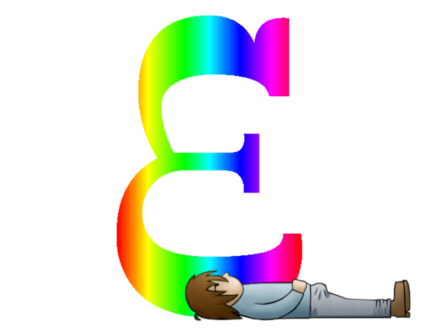Learn all about ephebophilia definition, psychology, symptoms, causes and treatments.
The term ephebophilia comes from the Ancient Greek (ephebos) variously defined as “one arrived at puberty”, “a youth of eighteen who underwent his dokimasia and was registered as a citizen (Athens)”, and “arriving at man’s estate”; and (-philia) “love”.
The term has been described by Frenchman Felix Buffiere in 1980 and Pakistani scholar Tariq Rahman, who argued that ephebophilia, should be especially used with regard to homosexuality when describing the aesthetic and erotic interest of adult men in adolescent boys in classical Persian, Turkish, or Urdu literature. The term was additionally revived by Ray Blanchard to denote adults who sexually prefer 15- to 19-year-olds.
The US Government Accountability Office concluded, “The existence of a cycle of sexual abuse was not established.” Until 1996, there was greater belief in the theory of a “cycle of violence,” because most of the research done was retrospective abusers were asked if they had experienced past abuse. Even the majority of studies found that most adult sex offenders said they had not been sexually abused during childhood, but studies varied in terms of their estimates of the percentage of such offenders who had been abused, from 0 to 79 percent.
More recent prospective longitudinal research studying children with documented cases of sexual abuse over time to determine what percentage become adult offenders has demonstrated that the cycle of violence theory is not an adequate explanation for why people molest children.
What is Ephebophilia?
Ephebophilia is the primary or exclusive adult sexual interest in mid-to-late adolescents, generally ages 15 to 19. The term was originally used in the late 19th to mid-20th century. It is one of a number of sexual preferences across age groups subsumed under the technical term chronophilia. Ephebophilia strictly denotes the preference for mid-to-late adolescent sexual partners, not the mere presence of some level of sexual attraction.
Ephebophilia Psychology
Some regard ephebophilia as a milder form of pedophilia in which the object of attraction is closer to the normal age of a sexual partner than with a true pedophile. Others regard ephebophilia as resulting from chronophilia, wherein the chronophile’s sexual/erotic age is discordant with his or her actual chronological age but concordant with the age of the partner. Yet another theory characterizes it by a refusal to age psychologically and a desire to reconnect with one’s youth. Attraction to adolescents is not generally regarded by psychologists as pathological except when it interferes with other relationships, becomes an obsession which adversely affects other areas of life, or causes distress to the subject. Forensic psychologist Karen Franklin traced the history of use of the term in a 2010 article. She states that it is a variation of ephebophilia used by Magnus Hirschfield in 1906 to describe homosexual attraction to males between puberty and their early 20s, who considered the condition normal and nonpathological. Historically, criminal hebephilic acts where victims were ‘biologically ready for coitus’ (i.e. statutory rape) were considered distinct from other forms of criminal sexuality such as rape and pedophilia, with wide variations within and across nations regarding what age was acceptable for adult-adolescent sexual contacts.
Ephebophilia Symptoms
The patients who are prone to ephebophilia, there are periodic fantasies that determine the extraordinary behavior in the field of sexual behavior. These antics do not correspond to cultural norms; they call for a complete or partial loss of the individual’s ability to adequately adapt to the established norms of society, as well as the neuroticization of ephebophil. Attraction is seen as the satisfaction of sexual tension. The consequences of non-natural actions are the cause of additional stress. But, in special cases, such actions are regarded as symptomatic of schizophrenia. The doctor, when examining the patient and collecting the anamnesis, should take into account that patients can carefully conceal socially unacceptable forms of attraction. Therefore, to clarify the diagnosis, one should observe the patient’s behavior in dynamics.
The first signs of ephebophilia appear in patients with established diagnoses:
- Mental and personality disorders.
- The consequences of brain damage with the development of mental infantilism.
- Schizophrenia in a state of remission.
- Syndrome of dependence on alcohol or drugs.
The intensity of symptoms is expressed in the emergence of sexual attraction to children who are in adolescence.
Ephebophilia Causes
Ephebophilia actively progresses in individuals with sexual dysfunctions. During intimate relationships with inexperienced young men and women who do not know the techniques of sexual intercourse, such individuals feel superiority and are less likely to get convicted for their sexual activities. In men with a perverse sexual orientation under juvenile hyper sexuality, high sexual activity is manifested, in satisfaction of which the individual shows indifference how to realize the sexual desire. Many ephebophiles like the inexperience of teenage children, and they are happy to engage in “mentoring.”
Ephebophilia Treatment
Ephebophilia treatment includes the list of sources to treat it. Always seek professional medical advice about any treatment or change in treatment plans. The conditions present at treatment challenges, because they are often concealed, and are often associated with guilt and shame. They are generally treated with psychotherapy and medication. The type and setting (inpatient vs outpatient) of treatment utilized is dependent upon the degree of dysfunction the condition causes, as well as the threat the behaviours pose to others. Treatments include:
- Psychotherapy
- Cognitive behavioural therapy
- Orgasmic reconditioning
- Individual expressive-supportive psychotherapy
- Group therapy
- 12 step programs – Similar to Alcoholics Anonymous, designed for sexual addicts
- Social skills training and sex education
- Hypnosis
- Medications
- Antidepressants
- Long-acting gonadotropin-releasing hormones (GnRH, ie, medical castration)
- Antiandrogens
- Phenothiazine
- Mood stabilizers
 Health & Care Information
Health & Care Information 


